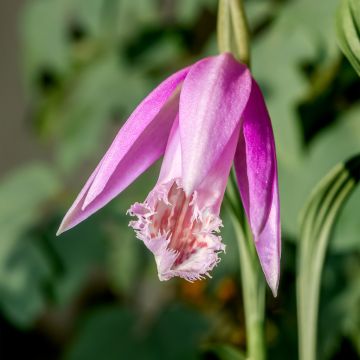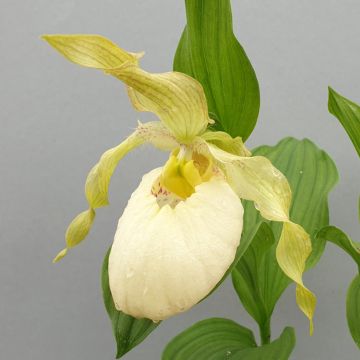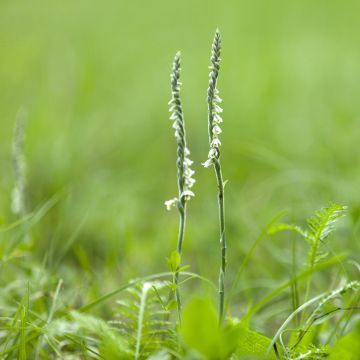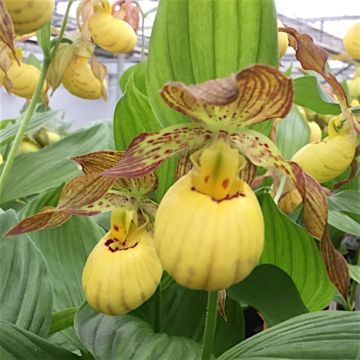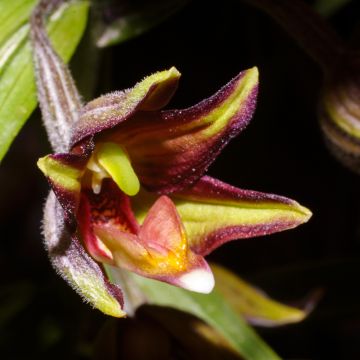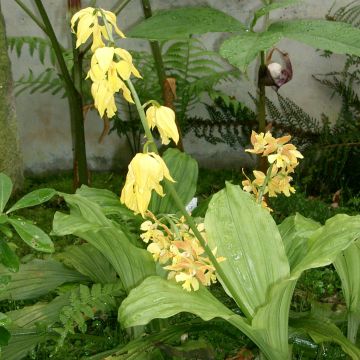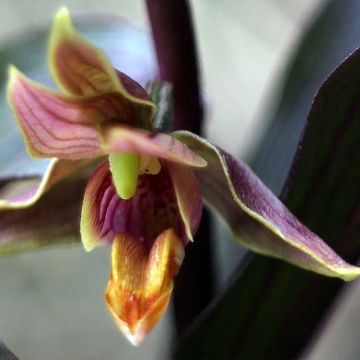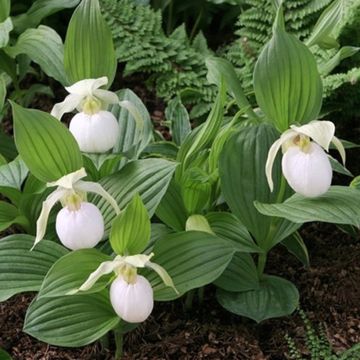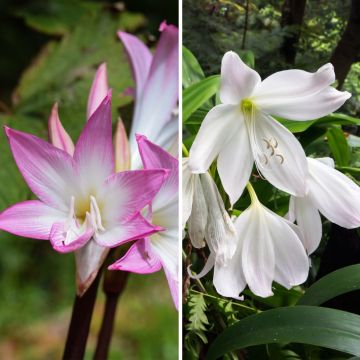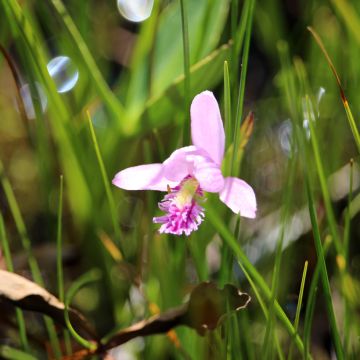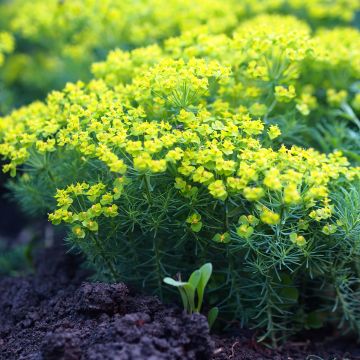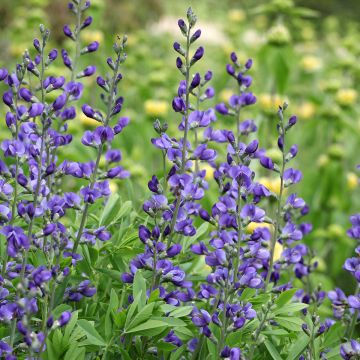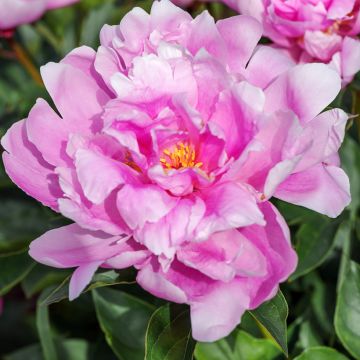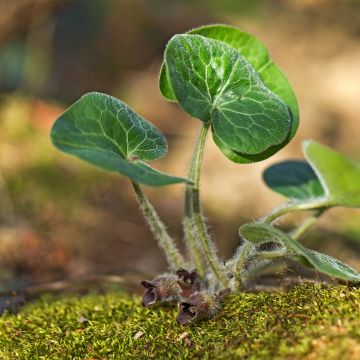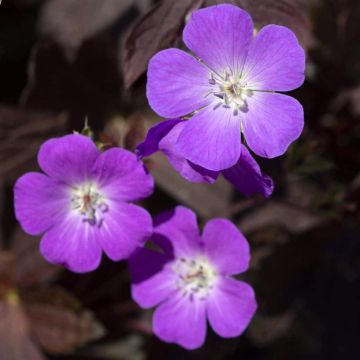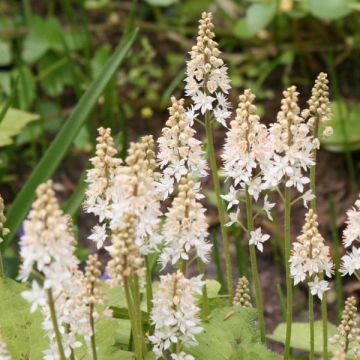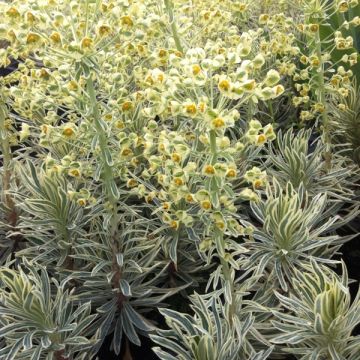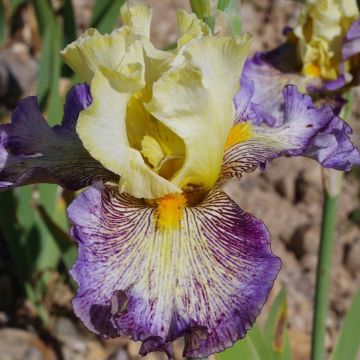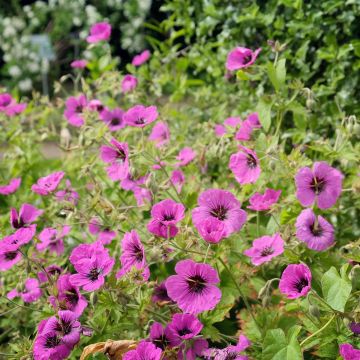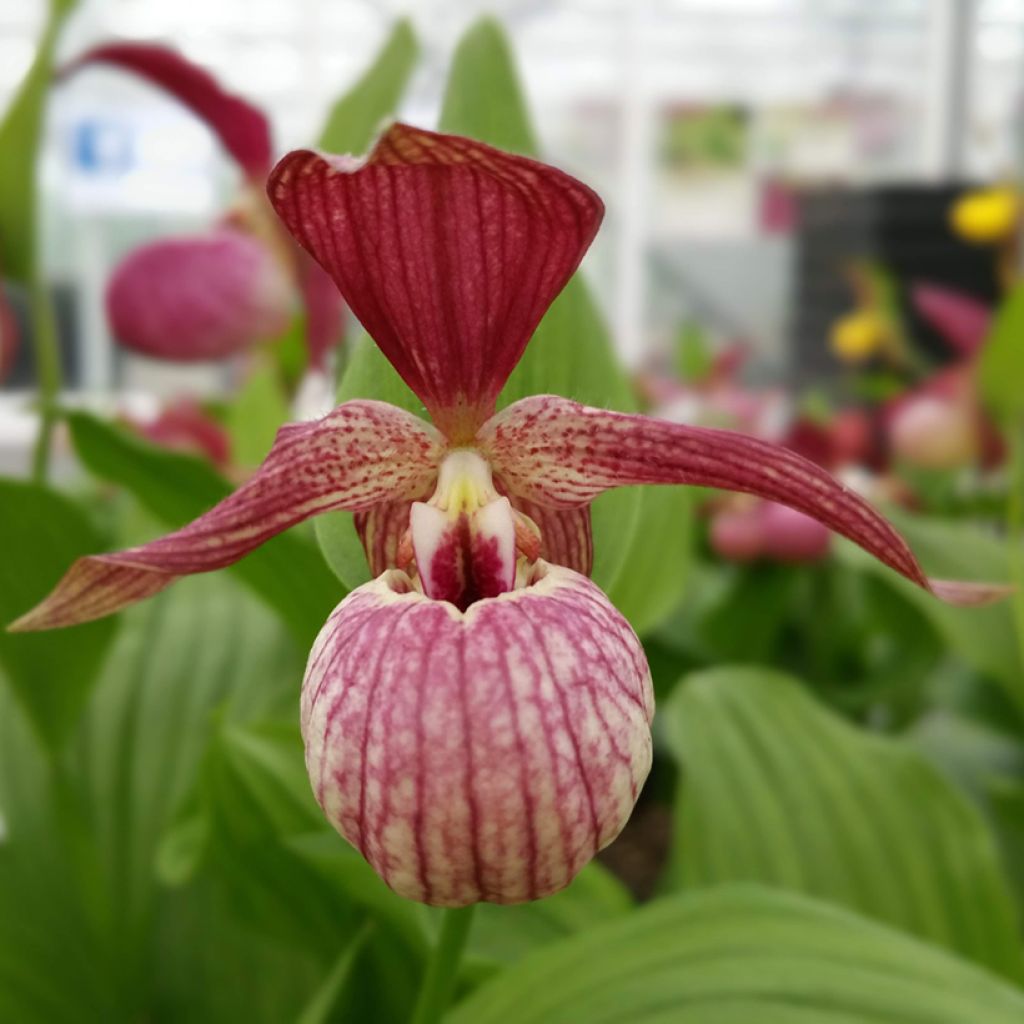

Cypripedium x ventricosum Red - Lady Slipper Orchid
Cypripedium x ventricosum Red - Lady Slipper Orchid
Cypripedium macranthos (x) calceolus ventricosum Red
Large-flowered Cypripedium, Large Yellow Lady's Slipper, Greater Yellow Lady's Slipper
This item cannot be shipped to the selected country
Delivery charge from €5.90
More information
Schedule delivery date,
and select date in basket
This plant carries a 12 months recovery warranty
More information
We guarantee the quality of our plants for a full growing cycle, and will replace at our expense any plant that fails to recover under normal climatic and planting conditions.
From €5.90 for pickup delivery and €6.90 for home delivery
Express home delivery from €8.90.
Does this plant fit my garden?
Set up your Plantfit profile →
Description
The Cypripedium x ventricosum 'Red' is a variety of Lady's Slipper that is vigorous and easy to grow, provided its requirements are met. It produces flowers in May-June, consisting of a prominent yellow lip, maculated and streaked with purple-pink, topped with twisted yellow petals streaked with the same purple-pink. The overall impression is more purple-pink than yellow. Give it a semi-shaded position in light, well-draining, humus-bearing soil but not too rich, moist, or slightly damp.
Cypripedium x ventricosum is a natural hybrid between Cypripedium macranthos and Cypripedium calceolus. The former is found in the undergrowth and fields of Siberia, Korea, Japan, China, and Taiwan. The latter is a spectacular species in Europe, the most well-known species on our continent. It has become rare in its natural habitat but is still found in a few rare Alps locations or mountain ranges.
The Cypripedium x ventricosum 'Red' has a perennial sucker-forming rootstock. Its thick underground rhizome elongates and divides over the years, allowing the plant to spread in colonies. Its roots penetrate deeply into the soil. They are mycorrhizal, meaning they live in symbiosis with specific fungi. Absent in winter, the deciduous vegetation emerges from the ground between April and May. This Cypripedium forms small clumps of 2 to 6 leafy stems, reaching about 45 cm in height. Each hairy stem bears 3 to 5 sheathing leaves at the base, broadly ovate, marked by parallel solid veins, light green in colour, and slightly hairy on the underside. Flowering occurs in May-June, earlier or later, depending on the climate and the year. Each individual produces only one or two flowers in the axils of bracts. Each flower, measuring up to 10 cm wide, consists of 3 sepals and three petals. These tepals are elongated, tapered, lanceolate in shape, slightly twisted. Their colour is a yellow-washed purple-pink. The swollen lip, shaped like a 'slipper', is yellow streaked and washed with purple-pink. The fruit capsule can persist on the plant for a year.
The Cypripedium x ventricosum 'Red' is a perfectly hardy variety that multiplies rapidly in pots and the garden as long as the conditions are suitable. It thrives in forest edges, preferring light soil that retains some moisture without being waterlogged. Plant it in a location that receives not too intense shade, in a cool rockery, an ideal habitat for it to thrive and enhance your garden with its unique presence. Pair it with a simple fern-like Polypodium vulgare and the flowering of Trilliums and Lamium orvala. It also thrives in containers and unheated greenhouses. It is a plant that dislikes heat, drought, and strong winds.
When you receive your orchids, handle them with care: these plants produce few roots and are delicate!
Report an error about the product description
Flowering
Foliage
Plant habit
Botanical data
Cypripedium
macranthos (x) calceolus
ventricosum Red
Orchidaceae
Large-flowered Cypripedium, Large Yellow Lady's Slipper, Greater Yellow Lady's Slipper
Cultivar or hybrid
Other Garden Orchids
Planting and care
Planting: in spring
Cypripedium x ventricosum 'Red' prefers well-drained soils low in organic matter. Air the soil by adding sand, pumice, or lava stone up to 50%. Also, add some finely shredded pine bark, leaf compost, and coconut fibre-based compost.
The rootstocks should not dry out in summer and should not be waterlogged in winter. If you need to water during the growth and flowering season, avoid using hard water.
Exposure:
In the garden, Cypripediums prefer slightly damp, not too hot places, slightly shaded but not entirely in the shade, as they like some brightness. Avoid exposure to direct sunlight during the hottest hours of the day.
In winter, the plant returns to its rootstocks and requires no special protection.
New shoots emerge from the ground in April, usually. The growth of the vegetation is very rapid. At the end of summer, the foliage turns yellow and then withers before completely disappearing.
Planting period
Intended location
Care
This item has not been reviewed yet - be the first to leave a review about it.
Spring flowering perennials
Haven't found what you were looking for?
Hardiness is the lowest winter temperature a plant can endure without suffering serious damage or even dying. However, hardiness is affected by location (a sheltered area, such as a patio), protection (winter cover) and soil type (hardiness is improved by well-drained soil).

Photo Sharing Terms & Conditions
In order to encourage gardeners to interact and share their experiences, Promesse de fleurs offers various media enabling content to be uploaded onto its Site - in particular via the ‘Photo sharing’ module.
The User agrees to refrain from:
- Posting any content that is illegal, prejudicial, insulting, racist, inciteful to hatred, revisionist, contrary to public decency, that infringes on privacy or on the privacy rights of third parties, in particular the publicity rights of persons and goods, intellectual property rights, or the right to privacy.
- Submitting content on behalf of a third party;
- Impersonate the identity of a third party and/or publish any personal information about a third party;
In general, the User undertakes to refrain from any unethical behaviour.
All Content (in particular text, comments, files, images, photos, videos, creative works, etc.), which may be subject to property or intellectual property rights, image or other private rights, shall remain the property of the User, subject to the limited rights granted by the terms of the licence granted by Promesse de fleurs as stated below. Users are at liberty to publish or not to publish such Content on the Site, notably via the ‘Photo Sharing’ facility, and accept that this Content shall be made public and freely accessible, notably on the Internet.
Users further acknowledge, undertake to have ,and guarantee that they hold all necessary rights and permissions to publish such material on the Site, in particular with regard to the legislation in force pertaining to any privacy, property, intellectual property, image, or contractual rights, or rights of any other nature. By publishing such Content on the Site, Users acknowledge accepting full liability as publishers of the Content within the meaning of the law, and grant Promesse de fleurs, free of charge, an inclusive, worldwide licence for the said Content for the entire duration of its publication, including all reproduction, representation, up/downloading, displaying, performing, transmission, and storage rights.
Users also grant permission for their name to be linked to the Content and accept that this link may not always be made available.
By engaging in posting material, Users consent to their Content becoming automatically accessible on the Internet, in particular on other sites and/or blogs and/or web pages of the Promesse de fleurs site, including in particular social pages and the Promesse de fleurs catalogue.
Users may secure the removal of entrusted content free of charge by issuing a simple request via our contact form.
The flowering period indicated on our website applies to countries and regions located in USDA zone 8 (France, the United Kingdom, Ireland, the Netherlands, etc.)
It will vary according to where you live:
- In zones 9 to 10 (Italy, Spain, Greece, etc.), flowering will occur about 2 to 4 weeks earlier.
- In zones 6 to 7 (Germany, Poland, Slovenia, and lower mountainous regions), flowering will be delayed by 2 to 3 weeks.
- In zone 5 (Central Europe, Scandinavia), blooming will be delayed by 3 to 5 weeks.
In temperate climates, pruning of spring-flowering shrubs (forsythia, spireas, etc.) should be done just after flowering.
Pruning of summer-flowering shrubs (Indian Lilac, Perovskia, etc.) can be done in winter or spring.
In cold regions as well as with frost-sensitive plants, avoid pruning too early when severe frosts may still occur.
The planting period indicated on our website applies to countries and regions located in USDA zone 8 (France, United Kingdom, Ireland, Netherlands).
It will vary according to where you live:
- In Mediterranean zones (Marseille, Madrid, Milan, etc.), autumn and winter are the best planting periods.
- In continental zones (Strasbourg, Munich, Vienna, etc.), delay planting by 2 to 3 weeks in spring and bring it forward by 2 to 4 weeks in autumn.
- In mountainous regions (the Alps, Pyrenees, Carpathians, etc.), it is best to plant in late spring (May-June) or late summer (August-September).
The harvesting period indicated on our website applies to countries and regions in USDA zone 8 (France, England, Ireland, the Netherlands).
In colder areas (Scandinavia, Poland, Austria...) fruit and vegetable harvests are likely to be delayed by 3-4 weeks.
In warmer areas (Italy, Spain, Greece, etc.), harvesting will probably take place earlier, depending on weather conditions.
The sowing periods indicated on our website apply to countries and regions within USDA Zone 8 (France, UK, Ireland, Netherlands).
In colder areas (Scandinavia, Poland, Austria...), delay any outdoor sowing by 3-4 weeks, or sow under glass.
In warmer climes (Italy, Spain, Greece, etc.), bring outdoor sowing forward by a few weeks.

































